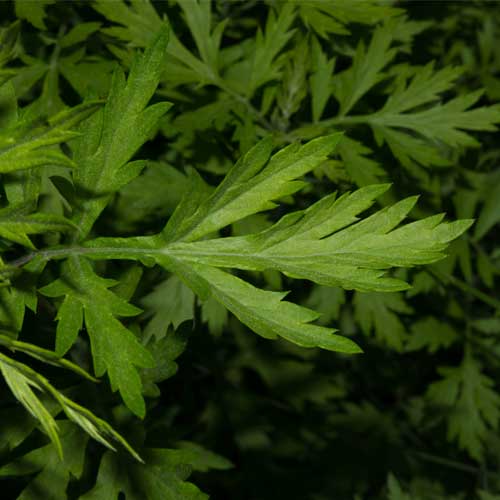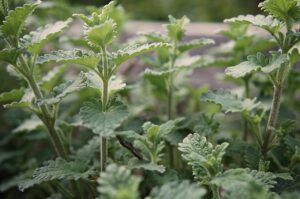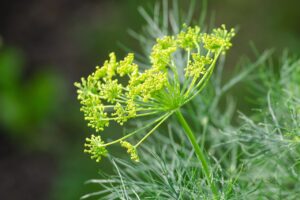How to Grow Mugwort
Mugwort, also known as Artemisia vulgaris, is a hardy and versatile herb that has been used for centuries in traditional medicine and culinary applications. It is a perennial plant that is native to Europe and Asia, but it can be easily grown in many different climates. Growing mugwort from seed is a simple process that can be done by gardeners of all skill levels. In this article, we will go over the step-by-step process for growing mugwort from seed.
Step 1: Choosing a Location
The first step in growing mugwort from seed is to choose the right location. Mugwort prefers full sun or partial shade, and it thrives in well-draining soil. If you are growing mugwort in a garden bed, choose an area that receives at least six hours of direct sunlight per day. If you are growing mugwort in a container, make sure it has drainage holes and that you use a well-draining potting mix.
Step 2: Preparing the Soil
Once you have chosen a location, it is time to prepare the soil. Mugwort prefers soil that is slightly acidic, with a pH range of 5.5 to 7.5. If your soil is too alkaline, you can lower the pH by adding sulfur or pine needles. If your soil is too acidic, you can raise the pH by adding lime.
Mugwort also prefers soil that is rich in organic matter. Before planting your seeds, add a layer of compost or well-rotted manure to the soil and mix it in thoroughly.
Step 3: Planting the Seeds
Once the soil is prepared, it is time to plant the mugwort seeds. Mugwort seeds are very small, so it is important to sow them thinly and evenly over the soil surface. If you are planting in a garden bed, you can scatter the seeds and then lightly rake them into the soil. If you are planting in a container, you can sprinkle the seeds over the soil surface and then gently press them into the soil.
Mugwort seeds can be planted in the spring or fall, but they will germinate more quickly and reliably if planted in the spring. Make sure to keep the soil moist but not waterlogged until the seeds germinate.
Step 4: Watering and Fertilizing
Once the seeds have germinated, it is important to keep the soil moist but not waterlogged. Water the plants deeply once a week, or more often if the weather is hot and dry. Avoid overhead watering, as this can lead to fungal diseases. Instead, water the soil around the plants.
Mugwort does not require a lot of fertilizer, but you can give it a boost by applying a balanced fertilizer once or twice during the growing season. Avoid over-fertilizing, as this can lead to leggy growth and reduced oil production.
Step 5: Pruning and Harvesting Mugwort
Mugwort is a fast-growing plant that can reach a height of three to four feet. To keep the plants compact and bushy, it is important to prune them back regularly. Prune the plants in the spring before new growth begins, and again in the summer to encourage branching.
You can harvest the leaves and stems of mugwort for use in tea, tinctures, and other herbal remedies. To harvest, cut the stems just above a leaf node and dry them in a warm, well-ventilated area until they are crisp.
Step 6: Pests and Diseases
Mugwort is generally a hardy and pest-resistant plant, but it can be susceptible to a few common pests and diseases. Aphids, spider mites, and whiteflies can all infest the plants, so keep an eye out for any signs of damage or infestation. You can control these pests by using insecticidal soap or neem oil, or by introducing natural predators such as ladybugs or lacewings.
Mugwort is also susceptible to fungal diseases such as powdery mildew and rust. To prevent these diseases, avoid overhead watering and make sure the plants have good air circulation. If you notice any signs of disease, remove the affected parts of the plant and treat with a fungicide if necessary.
Step 7: Winter Care
In colder climates, mugwort can be grown as a perennial, but it may require some winter protection. In the fall, cut the plants back to within a few inches of the ground and cover them with a layer of mulch, such as straw or leaves. This will help protect the roots from frost and keep the soil moist.
In areas with extremely cold winters, you may need to dig up the plants and overwinter them indoors. To do this, dig up the plants in the fall, shake off any excess soil, and pot them in a well-draining soil mix. Keep the plants in a cool, bright location, such as a sunny window or a heated greenhouse, and water sparingly until new growth appears in the spring.
Mugwort Companion Planting
When it comes to companion planting, mugwort is known to be beneficial for a few plants in particular, including:
- Cabbages: Mugwort is believed to repel pests like moths and caterpillars that can damage cabbage plants. Planting mugwort around your cabbage plants may help protect them from these pests.
- Tomatoes (Keep some distance): Mugwort is also believed to repel certain pests that can damage tomato plants, including whiteflies and aphids. Planting mugwort around your tomato plants may help keep these pests at bay.
- Beans: Mugwort is known to improve the overall health of the soil, which can benefit legume plants like beans. Planting mugwort alongside your beans may help improve their growth and productivity.
- Carrots: Mugwort is believed to improve the flavor of carrots when planted nearby. It may also help repel pests like carrot flies and aphids.
Overall, mugwort is a versatile companion plant that can benefit a variety of other plants in the garden. It’s worth noting, however, that mugwort can be a very aggressive plant and can easily take over a garden if left unchecked. It’s important to keep it contained and monitor its growth carefully to prevent it from becoming invasive.
Plants to Avoid
Mugwort is a strong and vigorous plant that can be allelopathic, meaning it can release chemicals that can inhibit the growth of other plants. As such, it may not be the best companion plant for certain plants in your garden.
Here are some plants that are generally best to avoid planting with mugwort:
- Basil: Mugwort can release chemicals that may inhibit the growth of basil, so it’s best to avoid planting these two together.
- Sage: Mugwort is allelopathic to sage, which means that it can inhibit the growth and development of sage plants.
- Parsley: Similar to basil and sage, mugwort can also inhibit the growth of parsley.
- Other aromatic herbs: Mugwort’s allelopathic properties may also negatively affect other aromatic herbs such as thyme and rosemary.
- Plants that are sensitive to allelopathy: This includes plants in the Solanaceae family, such as tomatoes and peppers, potatoes, eggplant as well as some legumes like beans and peas.
Keep in mind that these are general guidelines, and the specific effects of mugwort on other plants may vary depending on the growing conditions and other factors in your garden. If you’re unsure about whether or not to plant mugwort near a particular plant, it’s always a good idea to do a bit of research or consult with a gardening expert.
Conclusion
Growing mugwort from seed is a simple and rewarding process that can provide you with a steady supply of this versatile herb. By following these steps, you can successfully grow mugwort in your garden or in containers on your patio or balcony. Remember to choose a sunny location with well-draining soil, keep the soil moist but not waterlogged, and prune the plants regularly to keep them compact and bushy. With a little care and attention, your mugwort plants will thrive and provide you with a bounty of leaves and stems for use in herbal remedies, culinary dishes, and decorative arrangements.





This is my first time to finally have Mugwort, Lemon Balm , Vervain and Wormwood to add to my apothecary gardens. I hope I can give them what they need to thrive. We have a partial shade garden, with peas and beans, on the protected Front Garden or a Main garden that is full sun and little protection from winds. Thank you for the thorough information.